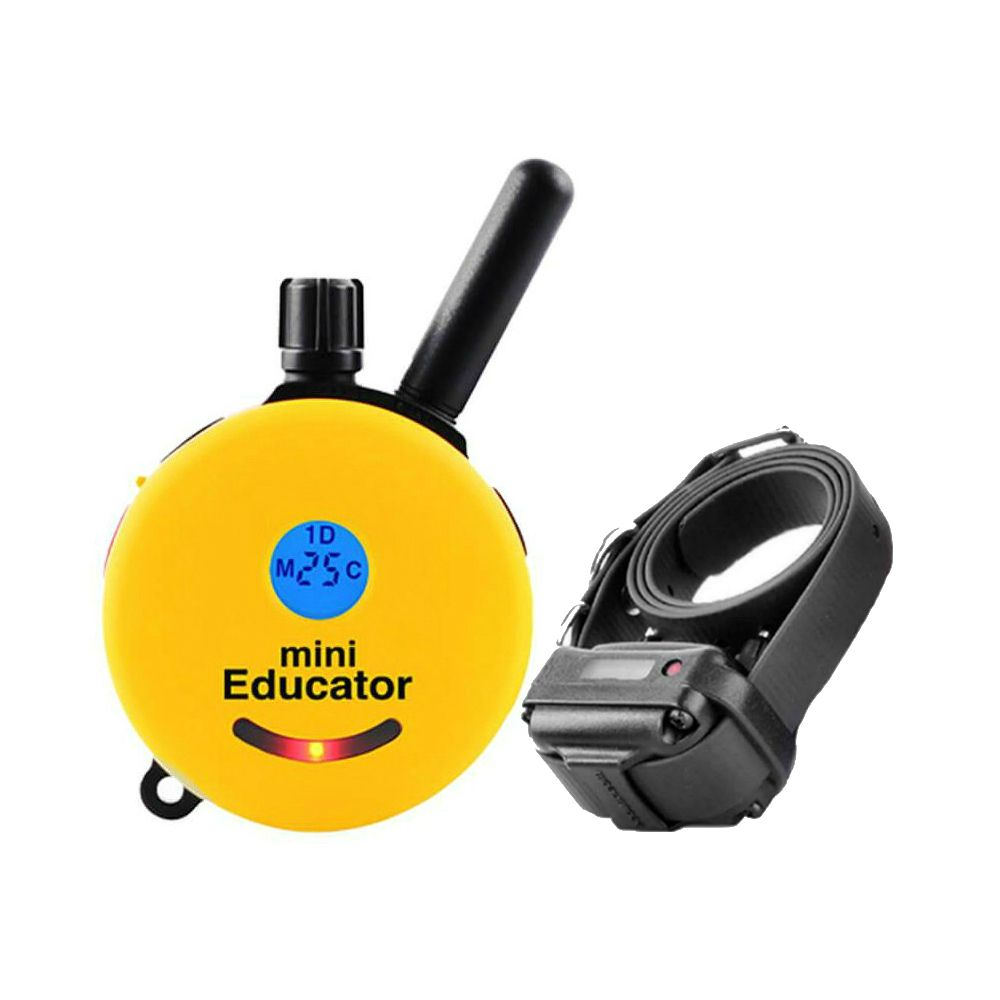Many veterinarians use a series of light, rapid taps on the dog’s head while he or she is restrained to direct their canine patient’s attention away from the procedure or exam taking place. During remote collar training, shock collars for dogs produce a similar effect. K9 Electronics promotes the “Tapping” method with extremely low levels of static stimulation to redirect the dog’s behavior. The method produces a mild pulse (tapping sensation) to the side of your dog’s neck that can be compared to tapping on someone’s shoulder.
 The best part about using an electric collar is that you can give your pet a “tap on the shoulder” from a distance, up to 1 mile. Once he learns what that tap-tap-tapping is all about, he quickly learns how to avoid it by simply complying with a command or stopping an unacceptable behavior.
The best part about using an electric collar is that you can give your pet a “tap on the shoulder” from a distance, up to 1 mile. Once he learns what that tap-tap-tapping is all about, he quickly learns how to avoid it by simply complying with a command or stopping an unacceptable behavior.
The gentle tapping method has been shown to produce positive results more quickly and with less stress on the dog than most other traditional training methods, such as training with pinch or choke collar. These traditional methods often require the use of brute force and can damage your dog’s larynx if not done properly.
Using the “Tapping” Method to Train Your Dog
Most quality e-collar systems feature a choice of two different types of static stimulation application:
Momentary mode
When the Momentary button is pressed, your dog receives a quick, split second nick of static correction (1/10 of a second).
Continuous mode
When the Continuous option is used, your dog will receive continuous static correction for up to 12 seconds. After 12 seconds, the system shuts off automatically – this is a built-in safety feature and will reset itself when the button is depressed.
The Continuous button is used in extreme situations only, where the safety of your dog is at risk. For the “Tapping” method example below, we are only going to use the Momentary “Nick” button.
Basic Obedience Commands
Let’s use the “come” command as an example.
- You’ll want to start by finding a quiet place with no distractions, such as an enclosed yard or the inside of a building or house.
- With a long lead attached to the dog’s flat collar and the e-collar set at your dog’s working level, allow him to relax and explore the training environment for a few minutes.
- When you are both ready, give the “come” command, begin tapping the momentary button, and slightly pull the lead at the same time (timing is important, so make a few practice tries before working with your dog). As soon as your dog starts his move toward you, stop tapping and praise him.
- If he stops before reaching you, repeat the command while simultaneously tapping and giving him another gentle tug.
- When he gets all the way to you, praise him for a good job, release him with “OK” and let him return to exploring for a minute.
- Repeat the procedure.
Soon your pet will have an “aha!” moment and realize he has the control and can remove the annoying tapping sensation by simply moving toward you as quickly as possible.
The same method can be used for all basic commands including sit, stay, heel, and more. However, shock collars for dogs only reinforces already learned voice commands, so your dog must be familiar with them prior to static stimulation training.
Behavioral Training (Breaking Bad habits)
Because of high distraction situations, you may need to increase the stimulation level for this type of training. Set the collar to 10 – 15 levels above obedience training level and start from that point.
For breaking bad habits, such as destructive digging in your garden, the trick is to make your dog believe that the correction is a direct result of the target behavior. Find a place where you can see the dog, but he can’t see you. When you’re inside the house, behind a window, for example, give your dog access to the garden. When you see your dog starting to exert undesired behavior, start tapping the momentary button while increasing the stimulation level until he stops. Repeat the process if your dog begins digging again.
It may take one session or several sessions for the dog to stop the unwanted behavior. During the training (and in between sessions), the dog must not have unsupervised access to the garden as he might become confused about when he can and cannot dig. Consistency is the key!
These are basic examples of how shock collars for dogs work. With every dog training collar purchase, K9electronics offers a free, 40-page, step-by-step training guide download that includes a full chapter dedicated to problem solving. The training guide will show you how to introduce your dog to the collar properly, how to fit the collar on your dog’s neck correctly, how to find the perfect stimulation level (Working level) for your dog’s specific temperament, and how to train basic commands.
If you have any questions, please feel free to contact us at 800-586-3780, send us an email or chat with us live.



Subscribeto get the latest dog training articles, latest offers & news.
You have Successfully Subscribed!